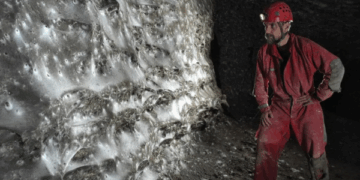The train business claimed in a statement that archeologists discovered a group of “amazing” rare Roman sculptures while digging a location in England ahead of a high-speed rail project.
While digging a ditch around the remains of an Anglo-Saxon tower, archeologists discovered two full statues of a lady and a man, as well as the head of a child, at the site of the ancient St Mary’s Norman church in Stoke Mandeville, Buckinghamshire, southeast England.
The three “stylistically Roman” busts were discovered while specialists working on the High Speed 2 (HS2) project delved deeper, a discovery that archeologists have described as “astonishing.” Rachel Wood, the lead archeologist at Fusion JV, who is working on the project, said in a release, “For us to complete the dig with this totally astonishing discovery is beyond thrilling.”
“The sculptures are incredibly well kept, and you get a true sense of the individuals they portray – really peering into the faces of the past is a once-in-a-lifetime experience,” Wood continued.
“Of course, this raises the question of what else may be buried under England’s medieval village churches.” This has certainly been a once-in-a-lifetime experience, and we are all eager to learn more from the experts about these beautiful sculptures and the history of the site prior to the Norman church’s construction.”
Two of the busts were constructed consisting of a split head and body, which experts say is “not altogether unusual” because sculptures are frequently defaced before being destroyed.
Huge roof tiles painted wall plaster, and Roman cremation urns were also discovered, as well as an “extremely well-preserved” hexagonal glass Roman jug — which, despite being over 1,000 years old, had enormous parts intact — and large roof tiles, painted wall plaster, and Roman cremation urns.
The team believes the site, which consists of a natural mound that has been topped with material to create a higher mound, was formerly a Bronze Age burial place. This was eventually replaced by a square structure that scholars believe is a Roman tomb.
In a news statement, HS2 stated, “Roman items uncovered in the ditch around the site are too elaborate and insufficient in number to imply the structure was a domestic building.”
The findings will be transported to a specialized laboratory for cleaning and examination.

























